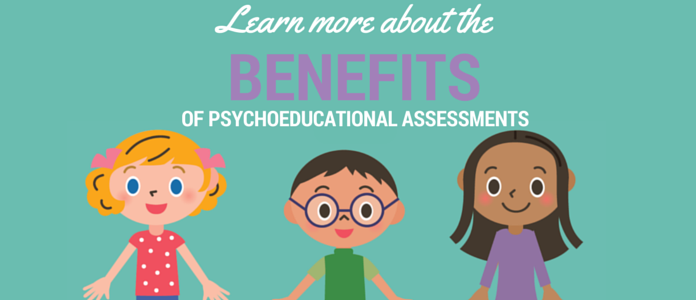We have written about giftedness on this blog in the past. We have also written about learning disabilities and psychoeducational assessments. However, what happens when a student simultaneously exhibits exceptional intellectual capacity with significant weaknesses and deficits in specific areas of learning? Gifted/LD is a paradox that is often seen as falling on either end of the learning spectrum. Students who are Gifted and Learning Disabled are very unique. It can be very challenging for these children from a social and academic perspective. Here’s what you need to know if you suspect your child may be Gifted/LD.

What is Gifted/LD?
Gifted/LD students are exceptionally bright across many areas, but they also have specific learning deficits in other areas. For example, a Gifted/LD student may be incredibility proficient in math or spoken language but struggle with reading or writing.
There are several learning disabilities that can affect Gifted/LD children and impede their academic achievements. Common learning disabilities include:
- Non-Verbal Learning Disability (NVLD): A type of learning disability that is characterized by poor social skills, motor coordination, and visual processing. In particular, children who have NVLD have difficulty identifying nonverbal cues such as facial expressions and body language, and need to verbally label things to understand them.
- Dyslexia: A type of language based learning disability that affects a child’s ability to read. Common signs of Dyslexia include slow reading speed, poor reading comprehension, and erroneous word pronunciation.
- Dysgraphia: A type of fine motor based learning disability that results in illegible writing despite a child’s extensive efforts. Other common signs of Dysgraphia include inconsistent choice of font, poor space planning on paper, and poor spelling. It is also challenging for a child with Dysgraphia to think and write at the same time.
- Dyscalculia: A type of number and math based learning disability that makes it difficult for children to count numbers and learn mathematical concepts. For example, a child with Dyscalculia may find it hard to understand the idea of borrowing for subtraction. Difficulties understanding dates and times are an obvious sign of Dyscalculia.
Challenges of Gifted/LD Children:
Gifted/LD kids develop in an uneven manner and because of this their learning profile and needs are often much more complex than gifted peers their age.
Early Identification/Diagnosis. It is sometimes possible to miss a Gifted/LD diagnosis because the giftedness may mask and compensate for the learning disability, and vice versa. However, the primary criterion for a child who may be Gifted and Learning Disabled is that potential does not match achievement.
Identification of Gifted Exceptionality: Although giftedness is a not a psychological diagnosis, identification of giftedness as an exceptionality recognized by a specific school board of education is determined through a test of cognitive ability and intelligence as well as other criteria that vary from school board to school board. At most school boards students who score at or above the 98th percentile in intellectual and cognitive ability, and meet other criteria indicating a need for differentiated instruction, are deemed gifted and in need of enhanced learning opportunities. However, parents should keep in mind that although the results from an intelligence test conducted by a registered psychologist may offer evidence of high intellectual ability, the ultimate decision for whether or not the student is identified as “Exceptional/Gifted” can only be made by the Identification, Placement and Review Committee (IPRC). Parents should also be aware that a child may be very talented without necessarily being identified as an intellectually gifted student by their school board.
Diagnosis/Identification of Learning Disability Exceptionality: In contrast to the identification of giftedness, a learning disability is a psychological diagnosis that can be made only by a registered psychologist who has conducted a comprehensive psychoeducational assessment, which involves behavioural observations, academic achievement and intelligence tests, measures of cognitive processing such as executive functioning, memory and attention, and social-emotional measures. The comprehensive nature of the psychoeducational assessment allows us to identify the child’s strengths and weaknesses, including exceptional intellectual abilities and/or any specific learning disabilities. The assessment report and results are then provided to the parents, and only with their permission, are provided to the Identification, Placement and Review Committee (IPRC), who will determine whether or not a student meets their board’s criteria for identification as “Exceptional//Gifted”. After the IPRC makes such an identification a decision is made about appropriate placement in some kind of enhanced learning setting. These placements vary greatly from board to board and may include placement in a “self contained” gifted class, part time placement or withdrawal to an enhanced learning class, or modifications to the curriculum to be carried out in the regular classroom setting. An Individual Education Plan (IEP) is typically developed that outlines how the child’s unique way of learning will be accommodated by the school.
School Placement. In a public school, a Gifted/LD child may be challenging to place because they require an intellectually challenging environment with peers of similar intellectual ability, while at the same time their learning disability needs must be addressed.
In most public boards of education in Ontario (and as previously mentioned), placements in gifted and special education programs are determined by an Identification, Placement and Review Committee (IPRC). A full and comprehensive psychoeducational assessment (which includes the necessary gifted testing measures) is typically required as evidence that the student meets the criteria necessary for a Gifted/LD determination. It is important to note that the IPRC can determine that a child has dual exceptionality – both Gifted and LD exceptionalities.
Intellectually, children who meet the criteria for Gifted/LD can be placed and/or remain in a gifted program because a learning disability does not diminish their general intellectual ability. However, they will likely also need additional support for their specific learning disability. After the IPRC has identified the dual exceptionality, the next step is for the school to construct an Individual Education Plan (IEP) that will outline a strategy for nurturing the student’s strengths and providing additional assistance in areas of weakness.
Emotional Difficulties. The difference between intellectual ability and achievement can result in emotional and behavioural difficulties. Unless a Gifted/LD child is identified early in childhood, depression, anxiety, withdrawal, or disruptive behaviour can develop. It is common for gifted students to have perfectionistic thinking styles. However, this form of thinking can cause psychological conflict in Gifted and Learning Disabled children because their weaknesses can prevent them from achieving their desired level of success.
In contrast, kids whose Learning Disabilities mask their gifted qualities can find school to be an unstimulating environment due to low academic expectations. This can lead to boredom resulting in a loss of motivation and interest in school. Frustration can build for Gifted/LD kids because it feels as if they cannot control their brain and body completely. Moreover, a conflict between their desire for independence and feelings of dependence can be distressing. Low self-esteem may eventually develop in Gifted/LD children because of a constant sense of failure. While they can do most things better than their age and grade peers, there are some academic tasks that mysteriously appear to be a much greater challenge. Overall, it is worthwhile to consider counselling for a Gifted/LD child with emotional difficulties.
Parent and Peer Pressure. Such difficulties may be further exacerbated by parent and peer pressure to perform to a certain level. For example, a gifted child that is underachieving in school can sometimes be considered lazy. Students also face a constant pressure to fit in with the majority. However, differences in cognitive and behavioural presentation can make socializing with their peers difficult for Gifted/LD children. Social isolation can be one of the biggest sources of distress for kids who are Gifted/LD.
As a parent or educator you can be a huge source of support for a child with Gifted/LD. The first step in supporting a child with Gifted/LD is to learn as much as you can about this puzzling paradox. Subsequently it is important to help the child understand the wonder and challenge of his or her Gifted/LD. Allowing both you and your child to accept the fact that he or she has strengths and weaknesses is the first step in reducing their stress. Most importantly, do not compare your child to siblings or friends. This can be discouraging for a child who is already stressed by a contradiction between their intellectual ability and academic performance.
Overall, the earlier you can identify your child’s strengths and weaknesses, the more his or her growth is maximized. Kids with dual exceptionalities are unique and complex, but have incredible potential for success when the right support networks are in place. Getting your child assessed is one way to determine what the best support for their unique learning profile is, both at home and at school.

